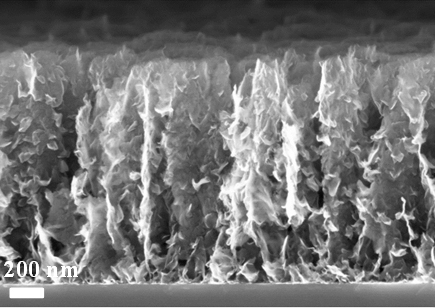Over the past years the rapid and growing demand of miniaturized electronic devices, such as medical implants (neurotransmitters), micro-sensors or micro-mechanical systems, has triggered intensive investigations in the research of new on-chip energy storage units for their integration into such systems. In this regard, a great deal of attention has been recently focused on the exploration of advanced nanostructured materials, design of highly stable ionic liquid-based electrolytes and development of modern device architectures respectively. From the electrode material perspective, graphene, as a robust and attractive 2D nanostructure with high surface-to-volume ratio and large surface area, has been demonstrated to be an excellent capacitive material in the field of electrochemical supercapacitors. Presently, in spite of the enormous variety of reported graphene-based structures, the finding of an optimal and reliable structure for high performance energy storage devices remains still a big challenge for our society.
In order to achieve this goal, we have developed a micro-supercapacitor based on vertically aligned graphene nanosheets, VGNs, grown by an innovative catalyst-free ECR-CVD procedure onto highly doped silicon substrates. Electro-chemical characterizations, performed at Inac’s Hybriden facility, have highlighted its great potential for energy storage applications: the devices display a high specific capacitance (2 mF cm
-2) and power density (4 mW cm
-2) as well as an excellent lifetime (electrochemical stability loss of 20% after 150 000 galvanostatic cycles) using an ionic liquid as electrolyte. Thus, this excellent performance resulted mainly from the peculiar porous open-channel graphene morphology, which favors ion transfer in the electrode-electrolyte interface. The results reported in this study open up an interesting and exciting scenario in the field of VGN-based supercapacitors, where important breakthroughs are still needed. Thereby, nowadays we are working on several approaches dealing with the functionalization through pseudo-capacitive materials (conducting polymers and transition metal oxides) or the improvement of some important physical-chemical properties as for example the doping level. Consequently, these elements will play a crucial role to pave the future of ultra-high performance (
e.g.: efficient AC line-filtering) on-chip micro-supercapacitors in the next years.

SEM micrograph of vertically graphene nanosheets grown by electron cyclotron resonance-plasma enhanced chemical vapor deposition (ECR-CVD) on highly n-doped Si (111) substrates.